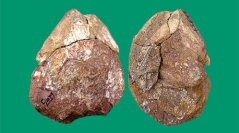

 Comptes Rendus Palevol
21 (37) - Pages 815-835
Comptes Rendus Palevol
21 (37) - Pages 815-835The fossil record of dipnoans is mostly represented by tooth plates and jaw bones, whereas nearly complete or complete skulls are rare. Here, we describe a new dipnoan from the Santonian (Upper Cretaceous) of Patagonia (Argentina) using three-dimensional renderings generated by CT scans. It consists of a near-complete skull and postcranial material. Rinconodus salvadori n. gen., n. sp. is diagnosed by a combination of features, such as medial series composed of two unpaired bones, mediolateral series composed of two paired bones, lateral series with at least one bone, medial edge of tooth plates longer than the lingual edge and equally curved, upper tooth plates contiguous or close to one another with five denticulations, lower tooth plates widely separated with four denticulations, first denticulation of upper tooth plates longer and thinner than the remaining denticulations, and posteriorly curved, first denticulation of lower tooth plates relatively straight and longer than the remaining ones, among other characters. The new species is based on the first two nearly complete Santonian dipnoan skulls from South America. Moreover, the materials presented here are the geologically youngest dipnoan remains consisting of a near-complete skull and postcranium from the Cretaceous of Gondwana.
Sarcopterygii, Dipnoi, Ceratodontoidei, Ceratodontidae, Cretaceous, Santonian, Neuquén Bassin, Argentina, new genus, new species.